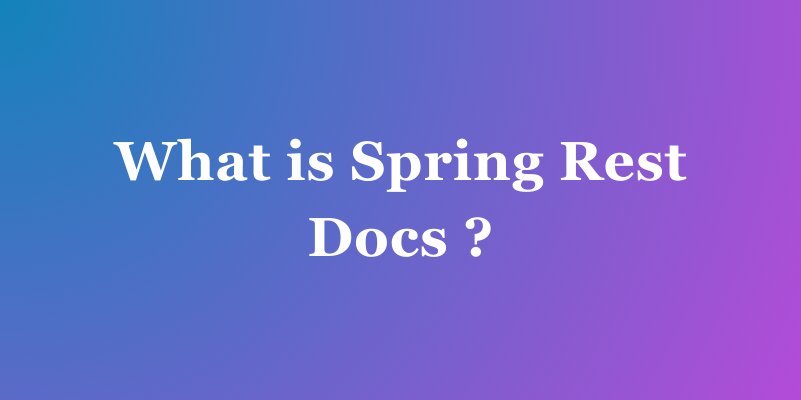How to Generate Swagger Documentation from JSON
You may encounter scenarios where you need to generate Swagger documentation from existing JSON or YAML files. In this post, we will provide a detailed guide on how to generate Swagger documentation from JSON, complete with examples and step-by-step instructions.
Creating comprehensive API documentation is essential for developers to understand, implement, and work with your APIs effectively. Swagger, is a popular choice for documenting RESTful APIs. While it also provides limited features for developers. Apidog is a better choice to write your more readable and visual OpenAPI documentation.
While it's common to generate Swagger documentation from code annotations or comments, you may encounter scenarios where you need to generate Swagger documentation from existing JSON or YAML files.
In this post, we will provide a more advanced way to generate API and share in real-time using Apidog, as well as include a detailed guide on how to generate Swagger documentation from JSON, complete with examples and step-by-step instructions.
An Ultimate Guide to Generate Swagger Documentation from JSON File
Step 1: Obtain or Create the JSON Specification
Start by obtaining or creating the JSON or YAML specification for your API. This file should contain detailed information about your API, including endpoints, request and response formats, authentication methods, and more.
For our example, we'll use a simplified JSON specification for a fictional bookstore API:
{
"swagger": "2.0",
"info": {
"title": "Bookstore API",
"version": "1.0.0"
},
"paths": {
"/books": {
"get": {
"summary": "Get a list of books",
"responses": {
"200": {
"description": "Successful response",
"schema": {
"type": "array",
"items": {
"type": "object",
"properties": {
"title": {
"type": "string"
},
"author": {
"type": "string"
}
}
}
}
}
}
}
}
}
}
Step 2: Access Swagger Editor
To work with your JSON specification, you'll need a tool that can import it and convert it to Swagger documentation. Swagger Editor is a web-based tool that makes this process easy. Access the Swagger Editor in your web browser.

Step 3: Import Your JSON Specification
In Swagger Editor, select the "File" menu and choose "Import File." Then, browse and select the JSON specification file you obtained or created in Step 1.

Step 4: Validate and Preview Your API
After importing the JSON specification, the Swagger Editor will automatically validate it to ensure it adheres to the Swagger format. If there are any issues or errors, the editor will provide feedback and suggestions for correction. Review and address any validation errors to ensure your documentation is accurate.

Step 5: Edit the API Documentation
With your JSON specification successfully imported that is already generated Swagger documentation you can now edit and enhance your documentation using the Swagger Editor. You can add descriptions, examples, and more to make your API documentation even more informative and user-friendly.
Apidog: Create and Share API Documentation in Next Level
Apidog is your complete solution for API documentation, testing, and mocking, all in one platform. Its standout feature is its robust API documentation capabilities.
Advantages of Using Apidog:
Let's explore the benefits of generating Swagger documentation from JSON:
Importing Existing Specifications: If you already possess a well-defined API specification in JSON or YAML format, leveraging Apidog can save you time and maintain consistency between your API's implementation and its documentation.

Third-party Integration: When dealing with third-party APIs, you might receive API definitions in JSON or YAML. Converting these definitions to Swagger through Apidog enables you to uphold consistent documentation and seamlessly integrate these APIs into your projects.
Version Control: Bringing API specifications into Swagger with Apidog guarantees that your documentation remains synchronized with your codebase. This is especially crucial in collaborative development environments.
Enhanced Collaboration: Sharing Swagger documentation in JSON format via Apidog facilitates easier review, collaboration, and feedback exchange among your team regarding API specifications.
4 Simple Steps to Write and Share API Documentation from JSON
How does Apidog make API Documentation effectively and efficiently? There is a detailed Guide, let's go to have a look.
Step 1 Open Apidog and Import JSON Specifications
After signing in to Apidog, Click "Settings" on the left sidebar and select "Import Data" under the data management.

(Optional) Click the "+” button to open the menu, choosing "Import".

Step 2 Preview Your Imported JSON Specifications
After dragging and dropping your local JSON file to Apidog, there will be a brief review of the request, please check it clearly.


Step 3 Edit Your API and Test Request
In Apidog, you can enhance the API with the visualized interface, just put parameters headers and others in the blank. Then, test the API by clicking the "Send" button.

Step 4 Share the API Documentation to Your Team
Choose "Share", and click the "+New" in the blank. Set up the shared docs details, such as the environment, security, shared docs, and so on.


Apidog is available to open, edit, and delete the shared docs. You can copy the link to your team member for collaboration easily.


Conclusion
In summary, Apidog is a valuable tool for developers and teams looking to elevate their API documentation, and it offers a comprehensive solution for documentation, testing, and mocking all within a single platform. So, if you want to take your API documentation to the next level, Apidog is the way to go.





